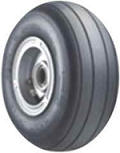 The saga over conflicts between the Department of State and the Department of Commerce regarding which agency has jurisdiction over exports of aircraft parts continues with the latest Final Rule issued by the Commerce’s Bureau of Industry and Security. The new rule amends section 770.2(i) of the Export Administration Regulations (“EAR”), which had otherwise been known as “Interpretation 9” and which purported to describe, among other things, which aircraft parts and components were subject to regulation by the State Department and which were subject to regulation by the Commerce Department. The jurisdictional issue is concerned in particular with aircraft parts that can be used on both civil and military aircraft.
The saga over conflicts between the Department of State and the Department of Commerce regarding which agency has jurisdiction over exports of aircraft parts continues with the latest Final Rule issued by the Commerce’s Bureau of Industry and Security. The new rule amends section 770.2(i) of the Export Administration Regulations (“EAR”), which had otherwise been known as “Interpretation 9” and which purported to describe, among other things, which aircraft parts and components were subject to regulation by the State Department and which were subject to regulation by the Commerce Department. The jurisdictional issue is concerned in particular with aircraft parts that can be used on both civil and military aircraft.
The new rule is prefaced with a detailed discussion of the Note that the State Department’s Directorate of Defense Trade Controls (“DDTC”) added in August of 2008 to Category VIII(h) of the United States Munitions List (“USML”) in which it tried to clarify this jurisdictional conundrum. The touchstone for the Note was section 17(c) of the Export Administration Act which provided that “standard equipment certified by the Federal Aviation Administration (FAA), in civil aircraft and is an integral part of such aircraft, and which is to be exported to a country other than a controlled country, shall be subject to export controls exclusively under” the Export Administration Act.
Under the Note, which is not necessarily consistent with section 17(c), DDTC states that parts that are “exclusively” designed for civil aircraft are covered by the EAR. Parts designed for military aircraft would be covered by the USML. Parts that can be used on both civilian and military aircraft are subject to the EAR if they meet the standards of 17(c). In the case of aircraft parts that are designated Significant Military Equipment but could be used on both civil and military aircraft, an exporter would be required to file a commodity jurisdiction request before availing itself of the benefits of section 17(c).
The new rule adopted by BIS attempts to bring Interpretation 9 and the Note to Category VIII(h) of the USML into harmony. The prior version of Interpretation 9 asserted jurisdiction over:
Parts, accessories and components (including propellers), designed exclusively for aircraft and engines described in paragraphs (i)(1), (i)(2), (i)(3) and (i)(4) of this section.
The aircraft described in those referenced sections are civil aircraft.
The new version of Interpretation 9 asserts jurisdiction over the following aircraft parts:
Any aircraft tires as well as any components, parts, accessories, attachments and associated equipment that are not specifically designed or modified for aircraft on the Munitions List and all components and parts not on the Munitions List by virtue of the criteria set forth in the note to Category VIII(h) of 22 CFR part 121.
Clearly the intent is to broaden EAR jurisdiction from parts “exclusively” designed for civil aircraft to parts “not specifically designed” for military aircraft, a subtle but important difference that brings Interpretation 9 into line with the Note to Category VIII(h) of the USML. But what’s up with the new reference to tires?
The language of Interpretation 9 could be read to commit all tires to EAR jurisdiction or only tires “not specifically designed” for military aircraft. There doesn’t seem any reason for the regulation to call out tires and then exclude tires “specifically designed” for military aircraft. The regulation could accomplish the same thing by excluding from the EAR all parts “specifically designed” for military aircraft. But one also has to wonder why tires were singled out for special treatment.
UPDATE: As Tom deButts pointed out in a comment left on another post, USML Category VIII(h) specifically excludes tires and propellers used with reciprocating engines even if they are specifically designed for military aircraft and can’t be used on civilian aircraft, something I should have noticed. The revised Interpretation 9 appears to reflect that although I still maintain it could have been more carefully worded.
 Permalink
Permalink
Copyright © 2008 Clif Burns. All Rights Reserved.
(No republication, syndication or use permitted without my consent.)

 Posted by
Posted by  Category:
Category: 

